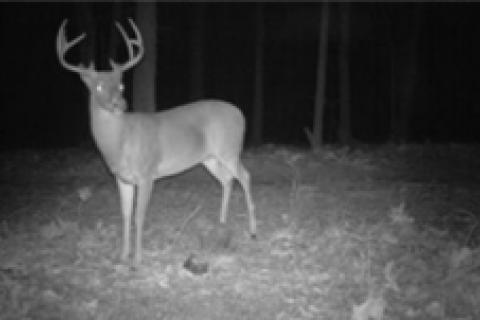
Part 4: Adult Deer *** Ratio
In this article I’ve been addressing a question posted on my Facebook page. The question was “What are your top 10 recommendations for managing land to yield mature, huntable deer?” During recent articles, I’ve described the importance of deer age Part 1, deer nutrition Part 2, and cover Part 3 in managing land to yield mature, huntable bucks.
If you’ve read those article entries, it is obvious that reducing stress is a common theme to achieve the goal of managing for mature,huntable bucks. An equally important herd characteristic that should be managed is the adult *** ratio. The adult *** ratio is simply the number of bucks to does that are at least 1.5 years old. If a herd was composed of five bucks and ten does that were 1.5 years old or older, that herd’s adult *** ratio would be 1:2.
 |
| Deer probably won’t express their full potential as an adult if they didn’t have all the required resources as a fawn. |
The adult *** ratio has several implications on the herd’s health and huntability, especially for mature bucks. It is common for a buck to attempt to tend a doe before she is receptive and remain near her for 24-48 hours. While he is “tending” that doe, other does may also be receptive. In fact, if the herd’s adult *** ratio is skewed heavily toward does, some does may cycle through their receptive period without being bred.
This results in them becoming receptive again about a month later. When this occurs, it means she will produce fawns a month later (or more if she cycles multiple times). This results in fawns being born later when conditions for fawning are probably not as favorable. As the summer progresses forage quality tends to decrease, insect loads become higher, the temperatures become higher, etc. Simply stated the conditions for prospering as a fawn tend to decline as the summer progresses.
Deer probably won’t express their full potential as an adult if they didn’t have all the required resources as a fawn. In addition to providing good quality forage (nutrition) and cover, it is just as important to ensure the adult *** ratio is balanced so the majority of fawns will be born during the optimal time for growth and reduced stress.
The older age classes also benefit from being part of a herd with a balanced adult *** ratio. It is very stressful for mature bucks to participate in the rut. Captive bucks in relatively small enclosures (less than five acres) and that have access to all the supplemental feeds they can consume have been reported to lose +/- 30% of their body weight during the rut. Given this, imagine the cost of participating in the rut for free-ranging wild bucks that must search for quality food, be constantly alert for two and four legged predators, and face all the daily challenges that captive deer avoid. In addition to the challenges of surviving, if a buck is part of herd where the adult *** ratio strongly favors does, the duration that he will seek, chase, and tend does is greatly extended simply because some does will not be bred during their first receptive cycle.
Likewise yearling bucks that are not fully mature will seek, chase, and tend receptive does as mature bucks are occupied with other receptive does. Yearling bucks would most likely develop better if they were dissuaded from chasing does by the presence of mature bucks (and their pheromones). Immature bucks need a huge amount of resources simply to maintain skeletal and body growth. The resources expended by participating in the rut may well limit the resources available for skeletal and body growth.
Likewise, it takes resources for does to cycle through her receptive period multiple times and nurture a fawn or fawns past the prime fawn rearing season.
Bucks, does, and fawns simply do best when they are born and rut during a natural timeframe and cycle. The best tool to ensure your herd is breeding and fawning at the optimal times is to manage the herd for a balanced adult *** ratio and ensure the population doesn’t exceed the habitat’s ability to supply quality forage.
In addition to a healthier herd, another huge benefit to managing for a balanced adult *** ratio is that that competition for breeding will likely be more intense and therefore bucks may be more active and most likely hunting strategies such as calling, rattling, using decoys, etc. may be more effective than in herds where there is not as much competition during the rut.
A great tool to manage your land to yield mature, huntable bucks is to establish and maintain a herd with a balanced adult *** ratio.
Learn more about managing deer age in Part 1, deer herd nutrition Part 2 and deer cover in Part 3 on my list of managing land to yield mature, huntable bucks.
From GrowingDeer.tv
Grant Woods
- 4143 views

